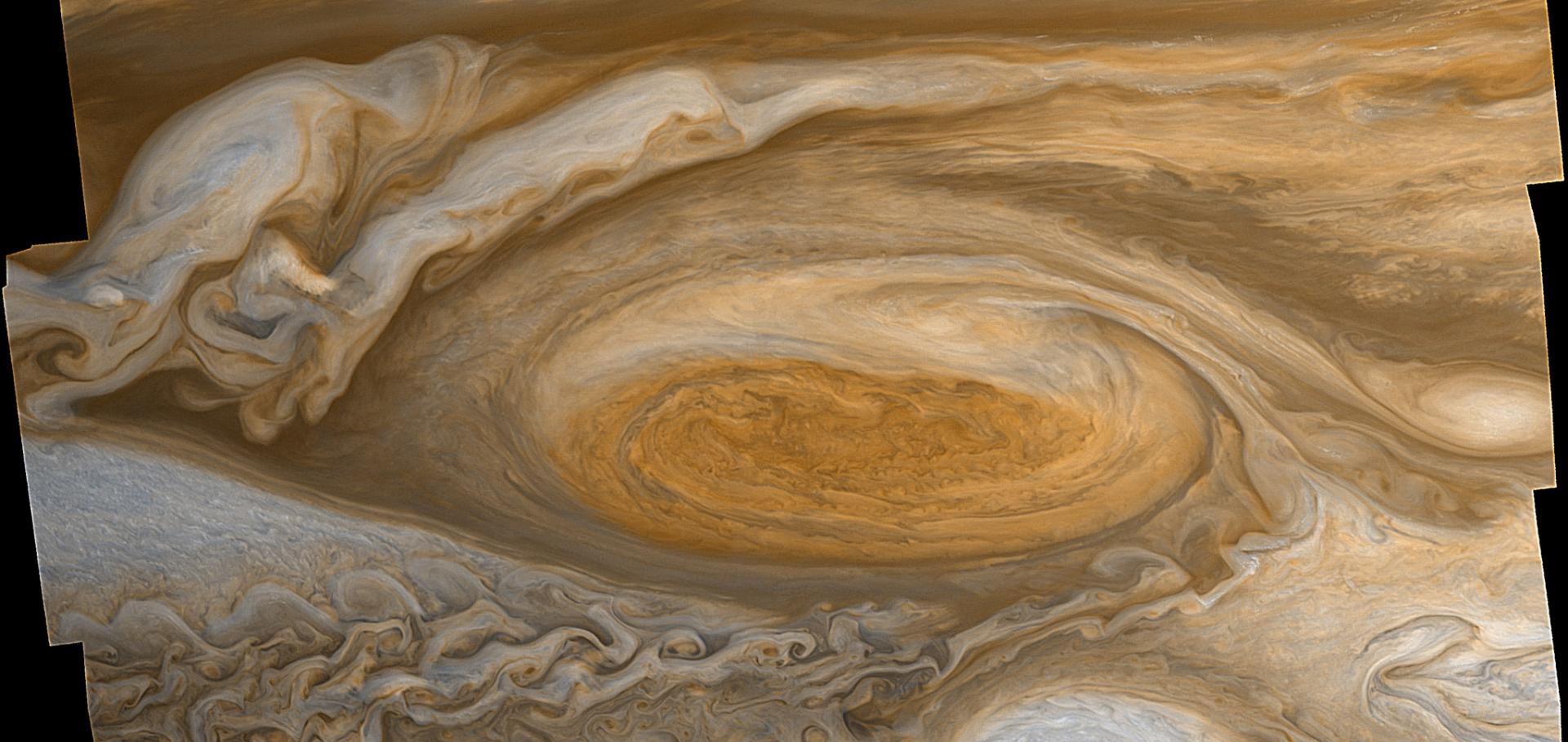Baroclinic and barotropic instabilities in planetary atmospheres: energetics, equilibration and adjustment
Nonlinear Processes in Geophysics Copernicus Publications 27:1 (2020) 147-173
Abstract:
Baroclinic and barotropic instabilities are well known as the mechanisms responsible for the production of the dominant energy-containing eddies in the atmospheres of Earth and several other planets, as well as Earth's oceans. Here we consider insights provided by both linear and nonlinear instability theories into the conditions under which such instabilities may occur, with reference to forced and dissipative flows obtainable in the laboratory, in simplified numerical atmospheric circulation models and in the planets of our solar system. The equilibration of such instabilities is also of great importance in understanding the structure and energetics of the observable circulation of atmospheres and oceans. Various ideas have been proposed concerning the ways in which baroclinic and barotropic instabilities grow to a large amplitude and saturate whilst also modifying their background flow and environment. This remains an area that continues to challenge theoreticians and observers, though some progress has been made. The notion that such instabilities may act under some conditions to adjust the background flow towards a critical state is explored here in the context of both laboratory systems and planetary atmospheres. Evidence for such adjustment processes is found relating to baroclinic instabilities under a range of conditions where the efficiency of eddy and zonal-mean heat transport may mutually compensate in maintaining a nearly invariant thermal structure in the zonal mean. In other systems, barotropic instabilities may efficiently mix potential vorticity to result in a flow configuration that is found to approach a marginally unstable state with respect to Arnol'd's second stability theorem. We discuss the implications of these findings and identify some outstanding open questions.The dependence of global and local metrics of super-rotation on planetary rotation rate
Copernicus Publications (2020)
Abstract:
Super-rotation is a phenomenon in atmospheric dynamics where the axial angular momentum of an atmosphere in some way exceeds that of the underlying planet. In this presentation, we will discuss the dependency of both globally-integrated, and local metrics of super-rotation on planetary rotation rate, revealed through analysis of idealised General Circulation Model experiments. The model used here is based on the Held-Suarez benchmark for a dry, 'Earth-like' atmosphere, and results from both axisymmetric and three-dimensional experiments will be presented. Previous work has shown that the three-dimensional configuration used here will transition to a state of equatorial super-rotation if the rotation rate is reduced sufficiently from the Earth's. This motivates the question: How does super-rotation strength depend on rotation rate?
We will use the term 'global super-rotation' to refer to an atmosphere with excess of globally-integrated axial angular momentum relative to that achieved by solid body co-rotation with the underlying planet, and 'local super-rotation' to refer to the existence of some region within the atmosphere where axial angular momentum exceeds that of the underlying planet at the equator. In an inviscid, axisymmetric atmosphere, the axial component of specific angular momentum is materially conserved. Consequently, in such a system local super-rotation is forbidden, although global super-rotation may still be achieved if a meridional circulation is able to transport fluid equilibrated with the equatorial surface poleward. If the restriction of axisymmetry is lifted, then local super-rotation may exist if non-axisymmetric disturbances that act to transport angular momentum up-gradient are present. The atmospheres of Venus, the Earth, Mars, and Titan may be considered to be globally super-rotating, however only Venus and Titan exhibit permanent local super-rotation at the equator.
The results from axisymmetric experiments reveal that at high rotation rate (e.g., greater than 1/4 of the Earth's), the degree of global super-rotation scales inversely with the square of the rotation rate. In the low rotation rate limit, the degree of global super-rotation saturates, and becomes independent of rotation rate. We will show that the high, and low rotation rate dependencies can be predicted by a single analytic scaling for global super-rotation. Our three-dimensional experiments exhibit the same scaling behaviour for global super-rotation as observed in the axisymmetric experiments. The degree of global super-rotation achieved by the three-dimensional experiments is less than that of the axisymmetric experiments at high rotation rates, and greater at lower rotation rates, but in both limits the deviation from the axisymmetric 'base circulation' is small. In the low-rotation rate limit, local super-rotation is accelerated at the equator, which is consistent with the three-dimensional experiments obtaining a higher degree of global super-rotation than their axisymmetric counterparts. Estimates for global super-rotation strength on the Earth and Mars agree closely with the results of our three-dimensional numerical experiments, but Venus and Titan achieve substantially stronger global, and local super-rotation than found here. It appears that low rotation rate alone cannot induce substantial excess global super-rotation, relative to the axisymmetric base circulation we identify.
Thermal versus mechanical topography: an experimental investigation in a rotating baroclinic annulus
Geophysical and Astrophysical Fluid Dynamics Taylor and Francis 114:6 (2020) 763-797


